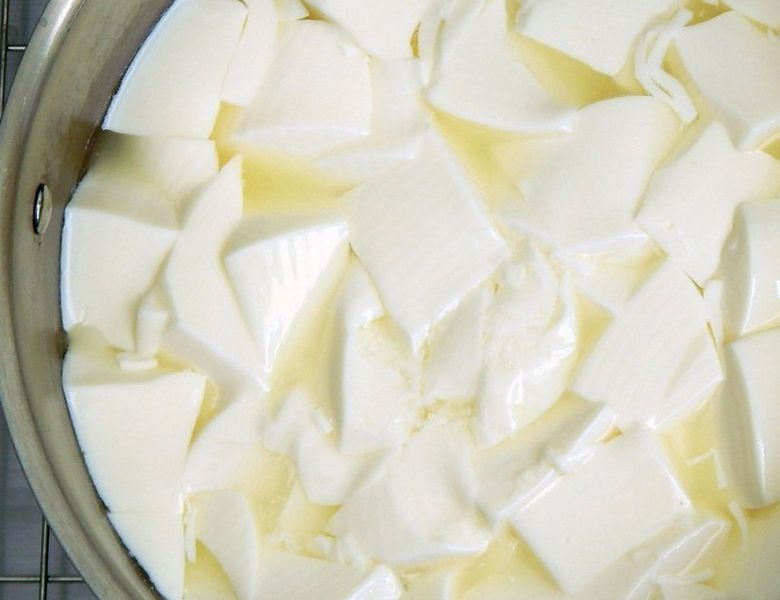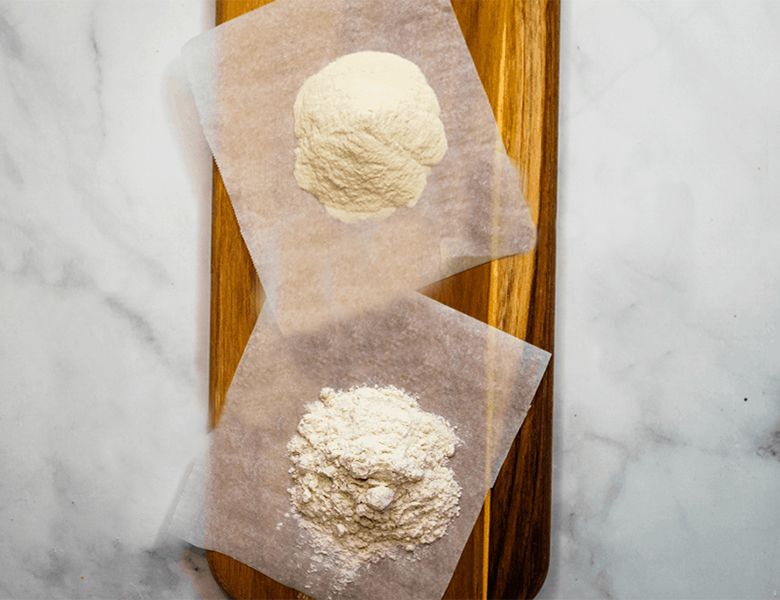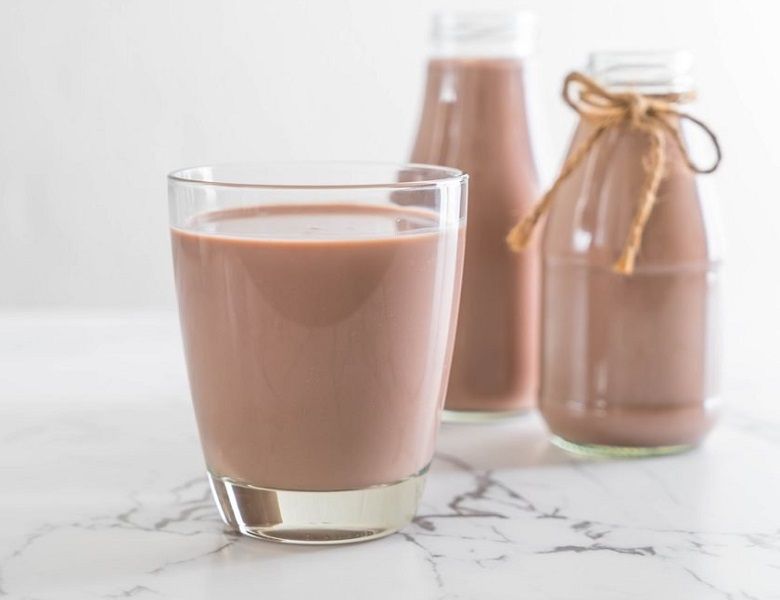Probiotic bacteria and selection criteria
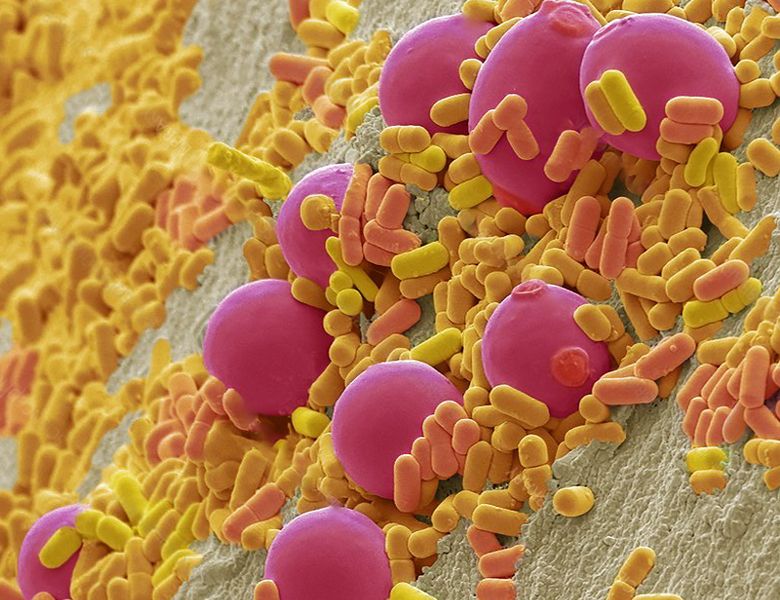
- | آتاماد |
- Viewer: 437
According to the most important factors of gut microbiota in maintaining health, food and pharmaceutical companies have shed light on products containing probiotic cultures in the form of single and multiple strains for human health. Probiotics are living microorganisms that are intended to have health benefits when consumed regularly and in sufficient quantities. In order to reach probiotic status, its resistance to manufacturing methods, digestion, and ability to improve health must be evaluated.
Currently, dairy is the largest sector of the food industry, where the most diverse probiotics are used to improve the quality of products. There are two important trends for incorporating probiotics into dairy products: 1) fermentation of dairy products either purely using selected probiotics or traditional strains in combination with probiotics; 2) incorporation of probiotic strains into the food matrix. Data shows that fermented milk and yogurt are the largest carriers of probiotics among all dairy products.
The most common probiotic species
The development of probiotic products has been based on species from the two main genera Lactobacillus and Bifidobacteria, because they are well tolerated during processing and storage, and have been the most studied probiotics. It should be noted that due to the lack of proteolytic activity, probiotics grow slowly in milk, so they are combined with Streptococcus thermophilus and Lactobacillus bulgaricus to achieve desirable sensory properties. In the table below, Lactobacillus acidophilus and Bifidobacterium lactis are fully introduced. Other common species of probiotics include B. animalis, B. breve, B. longum, L. reuteri.
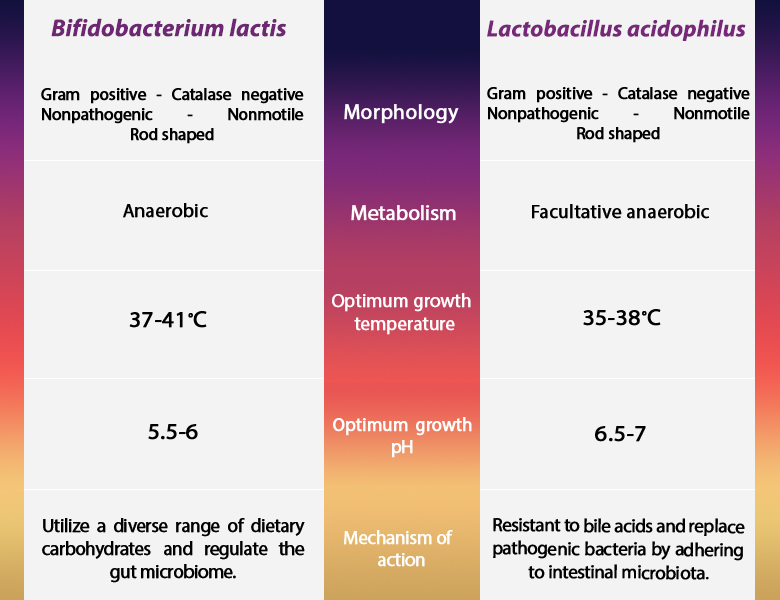
Different types of probiotics
Probiotics are classified as LAB-based traditional probiotics, non-LAB probiotics, and next-generation probiotics (NGPs). There is no cell count level of a probiotic strain in a food product that can assure health effects; however, 106-107 CFU/g are perceived as a sufficient number to avail probiotic benefits.
1. Traditional LAB probiotics
Most probiotic bacteria belong to LAB , especially Lactobacillus genus. LABs are mainly anaerobic, gram-positive, acid-tolerant, non-spore-forming, and are generally recognized as safe (GRAS), including both homofermentative and heterofermentative bacterial strains. LAB members are characterized by the formation of lactic acid as the end product of carbohydrate metabolism. Lactobacillus is the largest genus of this group containing 314 species. Although many LABs are probiotic in nature, there are controversial species that may not be probiotic. L. casei, L. rhamnosus, L. acidophilus, and Bifidobacterium lactis are some of the well-documented probiotic strains with clinical and industrial use. L. rhamnosus is recognized as the world’s best-characterized probiotic strain. L. reuteri and L. johnsonii are two novel LAB probiotics that have the potential for the development of functional dairy products.
2. Non-LAB probiotics
Some strains belonging to the genera Bifidobacterium, Enterococcus, Escherichia, Bacillus, Clostridium, and probiotic yeasts (Saccharomyces spp.) are non-LAB probiotics. The genus Bifidobacterium represents the most prominent microbial members in the gut of healthy adults and breast-fed infants. Probiotic Bifidobacterium strains have shown great promise in improving human health, and many of which are used for the production of fermented milk-based products.
3. Next-generation probiotics (NGP)
More amenable to administration through a pharmaceutical product rather than a food product, NGPs include Bacteroides ovatus, B. xylanisolvens, B. fragilis, Akkermansia muciniphila, Faecalibacterium prausnitzii, and Clostridium species.
Application of probiotics in dairy products
Although probiotics are natural ingredients in many fermented dairy products, most fermented products do not contain well-defined probiotic strains. Although almost safe, LAB is not always probiotic in nature. The recent trend in the production of probiotic dairy products is to perform probiotic-based fermentation or to incorporate probiotic strains in food products (non-fermented or fermented). Probiotics are used either alone or in combination with traditional starter cultures.
- Probiotic fermented milk
Fermented milk is the largest carrier of probiotics in the dairy industry. Many probiotic bacteria have been reported to be used for milk fermentation in combination with starter cultures to induce desirable organoleptic and textural characteristics, apart from inducing health-promoting effects. Milk is not considered an ideal medium for the growth of many probiotic bacteria, thus the production of probiotic-based fermented milk is challenging in itself. When using probiotics in milk fermentation, it is important to ensure they grow well and survive during the fermentation process and storage. Also, choosing the optimal strain for milk fermentation is very important because of strain-specific heterogeneous and diverse mechanisms of action.
- Probiotic yogurt
Since yogurt is an ideal carrier of functional ingredients, there is a lot of interest in the production of probiotic yogurt with various probiotic strains that are either used for fermentation or incorporated into yogurts. Yogurt products produced by probiotic strains show better physicochemical, and sensory, significantly affecting yogurt aroma and flavor profile by producing components like 3-methylbutanal and acetoin and microbial properties. The addition of probiotics generally results in the production of yogurt with mild acidity, more extracellular polysaccharides (EPS), smooth texture, increased firmness and stickiness, and lower pH and syneresis.
- Probiotic cheese
Cheese is considered a better carrier for probiotics due to less water activity, low storage temperature (4-8°C), relatively higher pH, and textural characteristics (e.g., high-fat content). Ensuring the survival of probiotics during salting, ripening, and storage, and ensuring that probiotics do not cause any sensory abnormalities, are two concerns regarding the addition of probiotics to cheese. Probiotics are generally added to cheese to increase nutritional value rather than improve physiological characteristics. In addition, probiotics promote the growth of cheese starter cultures.
Probiotics are usually mixed with the cheese starter cultures during fermentation. The cooking and cheddaring steps and the presence of metabolically active LAB compete with probiotics and thus affect their growth. Moreover, the stage of probiotic incorporation matters much in their survival during cheese manufacture. Therefore, later stages of cheese making (salting and milling) are more appropriate to add probiotics. In general, probiotic cheese gained higher scores in consumer acceptability due to its better flavor, creaminess, and higher content of fatty acids.
- Probiotic butter and cream
According to reports, some probiotic bacteria reduce the cholesterol content of cream and butter. Probiotics generate a number of short-chain polyunsaturated fatty acids in cream and butter supplemented with plant oils. For example, when a combination of probiotic strains, including B. bifidum, L. acidophilus, S. thermophilus, and L. bulgaricus, was used for the fermentation of cream enriched with 2% vegetable oils, the high content of capric, butyric, and caproic acid was produced in cultured cream.
- Probiotic ice cream
The incorporation of probiotics in ice cream is very beneficial, because not only does it make ice cream a healthy and functional food, but in general, the survival of probiotics in ice cream during production and storage is higher than in many other dairy products. However, there are still a number of factors during the production and storage that affect the viability of probiotics, and there is a need to develop optimum methods to maintain a balance between probiotic viability and the physicochemical properties of ice creams. Various factors affecting the survival of probiotics in ice cream include the fermentation process, freezing and churning processes, overrun process, cold storage period, and melting/thawing of the product. According to studies, the fermentation of ice cream mixed with probiotics is better than the incorporation of probiotics into the ice cream mixture without any subsequent fermentation.
- Probiotic powdered milk and infant formulas
The purpose of introducing probiotics to infant formula is to improve the balance of the intestinal microflora of infants, which plays an important role in the development of an effective immune system. Infant formula is increasingly supplemented with probiotics and prebiotics. The administration of probiotics containing bifidobacteria and lactobacillus strains has become more widespread in neonatology. It has been reported that B. bifidum and L. acidophilus remain more stable in infant formula compared to expressed breast milk and sterile water.
Selection criteria for probiotic strains
Lactobacillus acidophilus and bifidobacteria may inhibit the growth of gut microbiota. A successful probiotic must meet certain criteria. The probiotic selection criteria are shown in the figure below.

Bottom line
The production of probiotic functional foods, being one of the largest markets of functional foods, is an expensive and challenging process that depends on many factors such as consumers' sensory acceptance, physical and microbial stability, price, and other functional properties to be successful in the marketplace.
References:
- Probiotics in the dairy industry- Advances and opportunities. Compr Rev Food Sci Food Saf. 2021 Jul. doi: 10.1111/1541-4337.12755.
- Selection criteria for probiotics: A review. International Journal of Probiotics and Prebiotics. 2014 Jan.
GET IN TOUCH
Copyright © 2023 Atamad.com All right reserved
Website design and SEO services by Seohama team – Web hosting by Sarverhama
Copyright © 2023 Atamad.com All right reserved
Website design and SEO services by Seohama team – Web hosting by Sarverhama
